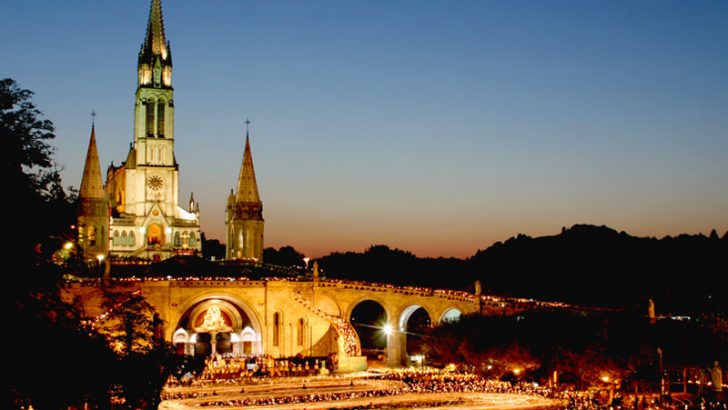The Village of Bernadette: The Irish Connections – Lourdes Stories, Miracles & Cures
by Colm Keane & Una O’Hagan (Capel Island, €14.99)
Lourdes has long been a premier destination of Irish pilgrims. It has answered to something in the Irish psyche. This is the theme that the husband and wife writing team of Colm Keane and Una O’Hagan have taken for their latest book.
But their main focus is on the cures that have been attributed to the intercession of the saint among Irish pilgrims over the decades since the 18 visionary encounters back in 1858.
These are sketched out in the introduction which is followed by a biographical account of Bernadette herself, the years of her wretched childhood, in poverty, often separated from her family, but driven by an urge to learn to read so as to finish her catechism and make her first communion. She came from a devout family, for whom their faith was a central feature of their lives.
But they also emphasise that Bernadette’s later years were by no means untroubled. She was often badly treated. She was vulnerable to those who wished, for many reasons, to exploit what she had experienced.
In the four central chapters they discuss the development of the pilgrimage, its enormous appeal to many millions of visitors every year, and to the cures and favours – all filtered through an Irish sieve, which will make the book of special interest to all who have been to Lourdes or plan to go.
The final chapters is devoted to a discussion of the varied sources they used, which will help the reader appreciate their efforts to authenticate what they say – especially important in any controversial matter.
The cures have always been carefully examined. Readers will be able to judge for themselves just how convincing the accepted evidence is. Critics have, in the past, pointed to the fact that the cures are often psychosomatic – possible reversals that could be attributed to natural processes.
They discuss the development of the pilgrimage, its enormous appeal to many millions of visitors every year”
They discuss well-known Irish visitors from John F. Kennedy to John D. Sheridan and many others less likely. These too will be of especial local interest.
As with previous books by these authors, this is a deeply felt, warmly sympathetic and humane book, from which many readers, no matter how much they think they know about Lourdes, will learn many new things.
One small criticism: the cover is quite misleading. The chalet illustrated resembles none of Bernadette’s childhood homes. It appears more Alpine than Pyrenean, more like the home of Heidi’s grandfather than anything the saint knew. Publishers have to carefully brief their artists, given the number of historical anomalies that appear in the art work on covers these days.


 Peter Costello
Peter Costello
